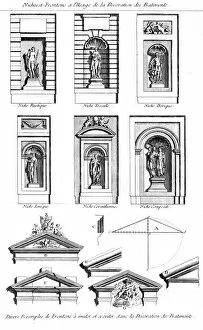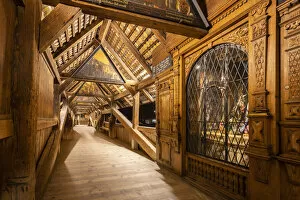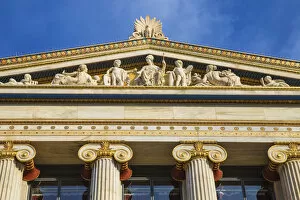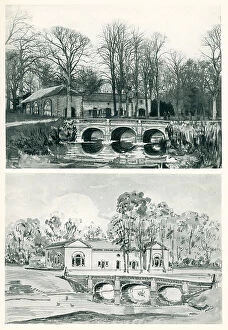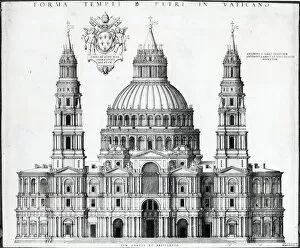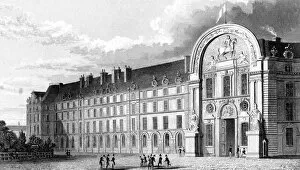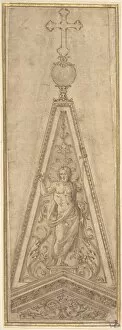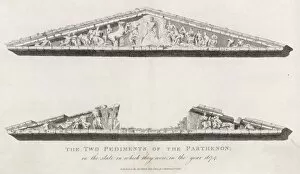Pediments Collection
Pediments, a prominent feature in classical architecture, are architectural elements that add grandeur and elegance to buildings
For sale as Licensed Images
Choose your image, Select your licence and Download the media
Pediments, a prominent feature in classical architecture, are architectural elements that add grandeur and elegance to buildings. These triangular structures can be found in various locations around the world, showcasing the beauty of different cultures and time periods. In Dunfermline Stables Proposed Orangery, pediments create niches for classical orders to shine through. This combination of architectural styles creates a unique blend of tradition and innovation. Maiden Erleigh, captured in an enchanting black and white photo by Giles Worsley, showcases the timeless appeal of pediments. England's Lost Houses come alive through these intricate designs that stand as a testament to the craftsmanship of yesteryears. Traveling across borders to Lucerne, Switzerland, one encounters Spreuerbrucke's wooden footbridge adorned with paintings depicting the Totentanz cycle by Kaspar Meglinger. Even at nightfall, these pediments tell stories from centuries ago while adding an air of mystery and intrigue. Athens boasts neoclassical pediments on its Academy of Arts - a sight that takes us back to ancient Greece while celebrating modern artistic expressions. The statues of Athena and Apollo further enhance this connection between past and present. Moving forward in time but still rooted in history is the design for the Royal Palace of Caserta from 1756. Engraved intricately into stone or paper alike, these pediments showcase opulence fit for royalty. Staying within Rome's boundaries brings us to St. Peter's Basilica with its awe-inspiring plan dating back to 1539. The grandeur displayed through its towering columns and majestic pediment reminds us why it remains one of Italy's most iconic landmarks. Returning once again to Athens' Academy of Arts reveals another neoclassical masterpiece - a reminder that great art knows no bounds when it comes to geography or time period.

